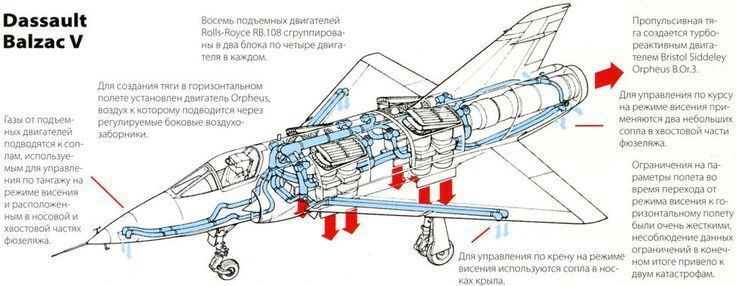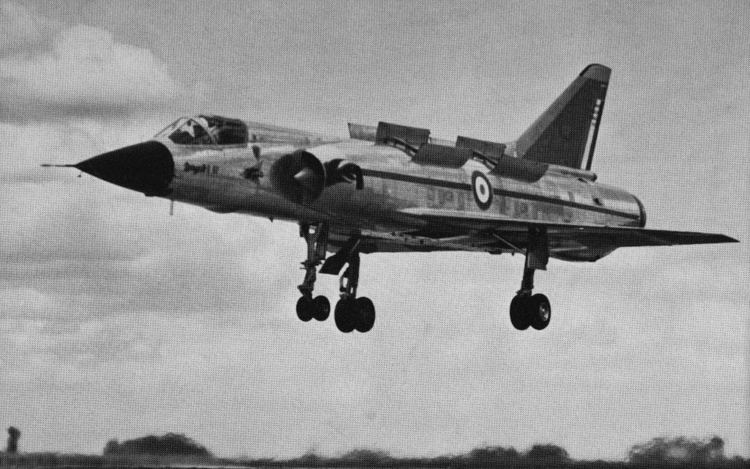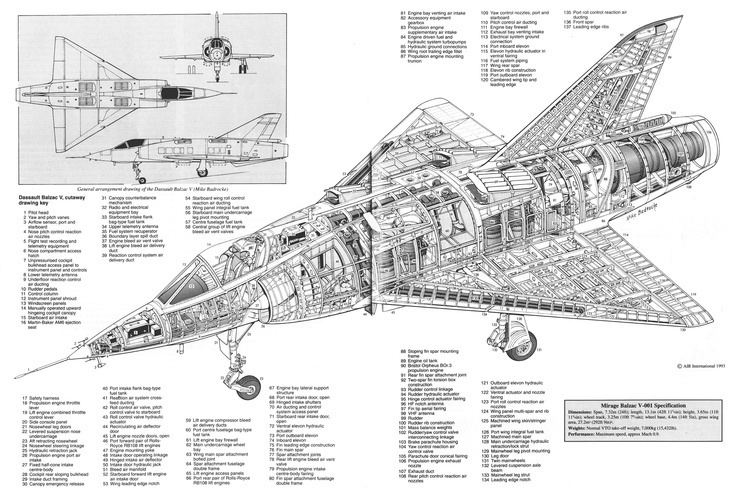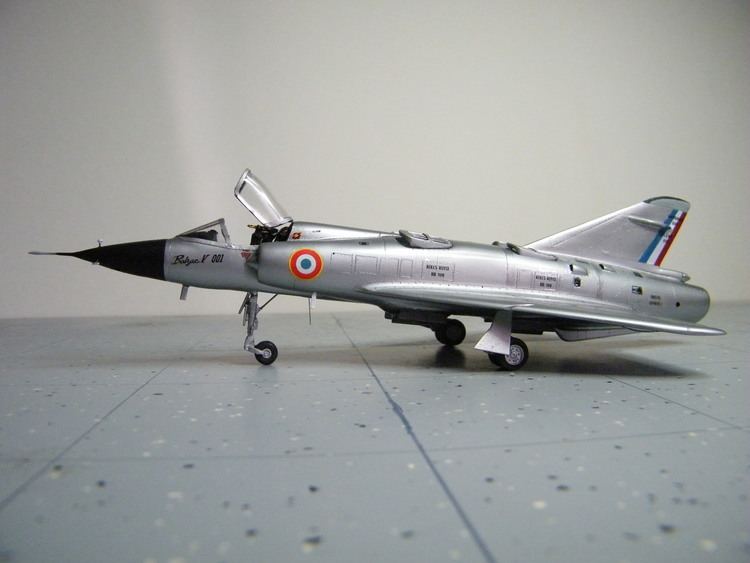Top speed 1,104 km/h Length 13 m | Wingspan 7.3 m | |
 | ||
Dassault balzac v
The Dassault Balzac V was a French vertical takeoff and landing (VTOL) testbed of the early 1960s. It was built by Dassault Aviation from a prototype Mirage III aircraft to test the configuration for the Mirage IIIV. The sole example was badly damaged during its second flight test accident and was not repaired.
Contents

Design and development

Since the Rolls-Royce RB162 lift engines specified for the Mirage IIIV were not expected to be available before 1963, Dassault modified the first Mirage III prototype to serve as an interim VTOL testbed. Eight Rolls-Royce RB108 lift engines were installed, each with an average maximum takeoff thrust of 9.83 kN (2,210 lbf). The Mirage III's SNECMA Atar G.2 propulsion engine was replaced with an unreheated (non-afterburning) Bristol Siddeley Orpheus BOr 3 with a thrust of 21.57 kN (4,850 lbf). The lift engines were grouped in tandem pairs around the aircraft's center of gravity on either side of the propulsion engine's intake duct, with each pair in a row separated by the main undercarriage wheelbays.
Operational history

The Balzac V began tethered hovering on 13 October 1962 and achieved the first free hover only six days later, two months ahead of schedule. The first accelerating transition from vertical takeoff to horizontal flight took place on its seventeenth sortie on March 18, 1963.

The aircraft crashed on 10 January 1964, on its 125th sortie, during a low-altitude hover. During a vertical descent the aircraft experienced uncontrollable divergent wing oscillations, the port wing eventually striking the ground at an acute angle with the aircraft rolling over because of the continued lift engine thrust. The loss was attributed to loss of control because the stabilising limits of the three-axis autostabilisation system's 'puffer pipes' were exceeded in roll. Although airframe damage was relatively light, the Centre D'Essai en Vol test pilot, Jacques Pinier, did not eject and died in the crash.

The aircraft was rebuilt, and resumed flight testing on 2 February 1965. On 8 September 1965, the aircraft suffered another fatal crash, once again while in a low altitude hover. The aircraft was being evaluated by United States Air Force Major P. E. Neale, as part of a Franco-American information exchange on VTOL programmes. Major Neale made an unsuccessful ejection outside the ejection seat's escape envelope. The findings of the accident investigation were never made public. It was speculated that hydraulic control difficulties coupled with excessive use of the lift engines resulted in fuel starvation and the flameout of all nine engines. Once again, the damage was not irreparable, but this time the aircraft was not rebuilt, as flight development of the Mirage IIIV prototype was already underway.

The Balzac V gained its name from the co-incidence of its serial number (001) with the telephone number (BALZAC 001) of a well-known Paris movie advertising agency (Publicité Jean Mineur).
Specifications (Balzac V)
Data from
General characteristics
Performance
